Interior design is not merely about selecting the right furniture or the perfect shade of paint; it’s about creating a harmonious environment that resonates with the rhythm of your life. A sense of flow in interior design is akin to a well-composed piece of music, with each element contributing to a seamless symphony of style and function. Achieving this flow can transform a disjointed collection of rooms into a cohesive and tranquil sanctuary.
With all that in mind, here we explore the art of cultivating flow in your home, ensuring that each space not only looks exquisite but feels inherently right.
Understanding Flow In Interior Design
Flow is the effortless transition between different areas of your home. It’s the smooth continuity that guides the eye and the feet, leading one naturally from space to space. When a home has good flow, it feels intuitive and welcoming; there’s a sense of unity that ties together the various elements and rooms.
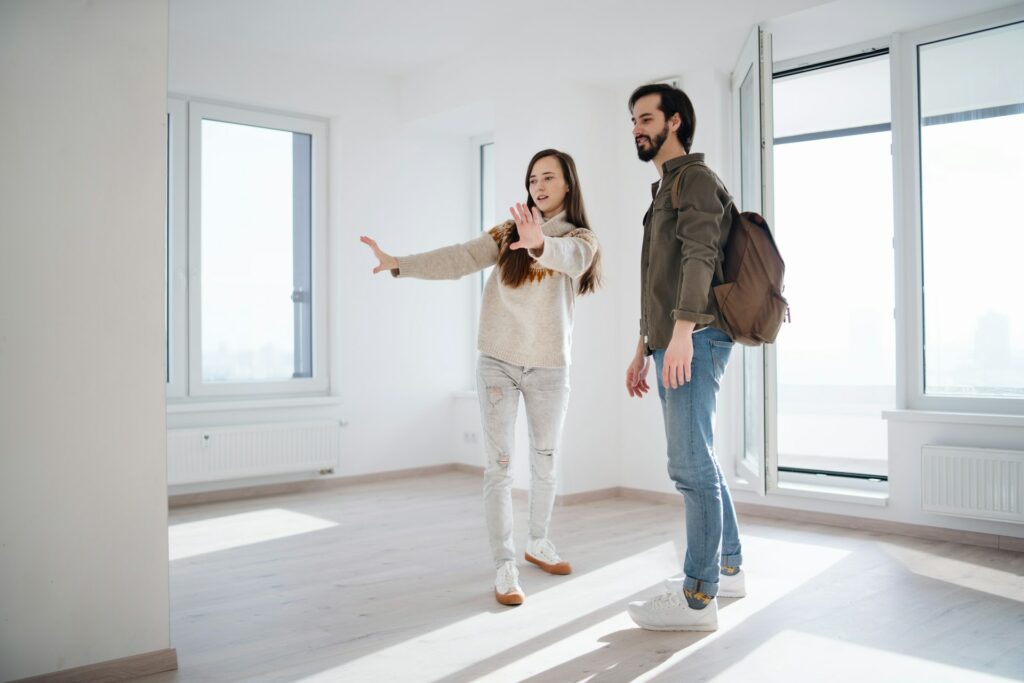
The Role Of Colour
Colour is a potent tool for creating flow. It can be used to connect rooms without erasing their individual character. To achieve this, consider a cohesive colour palette that complements the entire home. This doesn’t mean every room should be painted the same hue; rather, choose a selection of colours that work harmoniously together.
For instance, you might select a soft dove grey for the living room, a deeper charcoal for the dining area, and a pale blue-grey for the kitchen. These shades, while distinct, share a common undertone that creates a subtle, visual connection.
The Power Of Flooring
Flooring can serve as a physical and visual pathway between spaces. Consistent flooring throughout your home can significantly enhance the sense of flow. If you prefer different flooring types for practical reasons, ensure they are similar in colour or texture. Transition strips can help bridge the gap between different materials, but choose them carefully to maintain a sense of continuity
Read: What are the most durable, resilient options for a home with heavy foot traffic?
Furniture & Layout
The arrangement of furniture plays a crucial role in the flow of your home. Aim for layouts that encourage easy movement between rooms. As the team at doorways.co.uk tell us, you should avoid placing large pieces of furniture in walkways or near doors where they can interrupt the natural paths people take.
In open-plan spaces, use furniture to define different areas while keeping an eye on the overall cohesion. Rugs, for example, can anchor a seating area without creating a visual barrier.
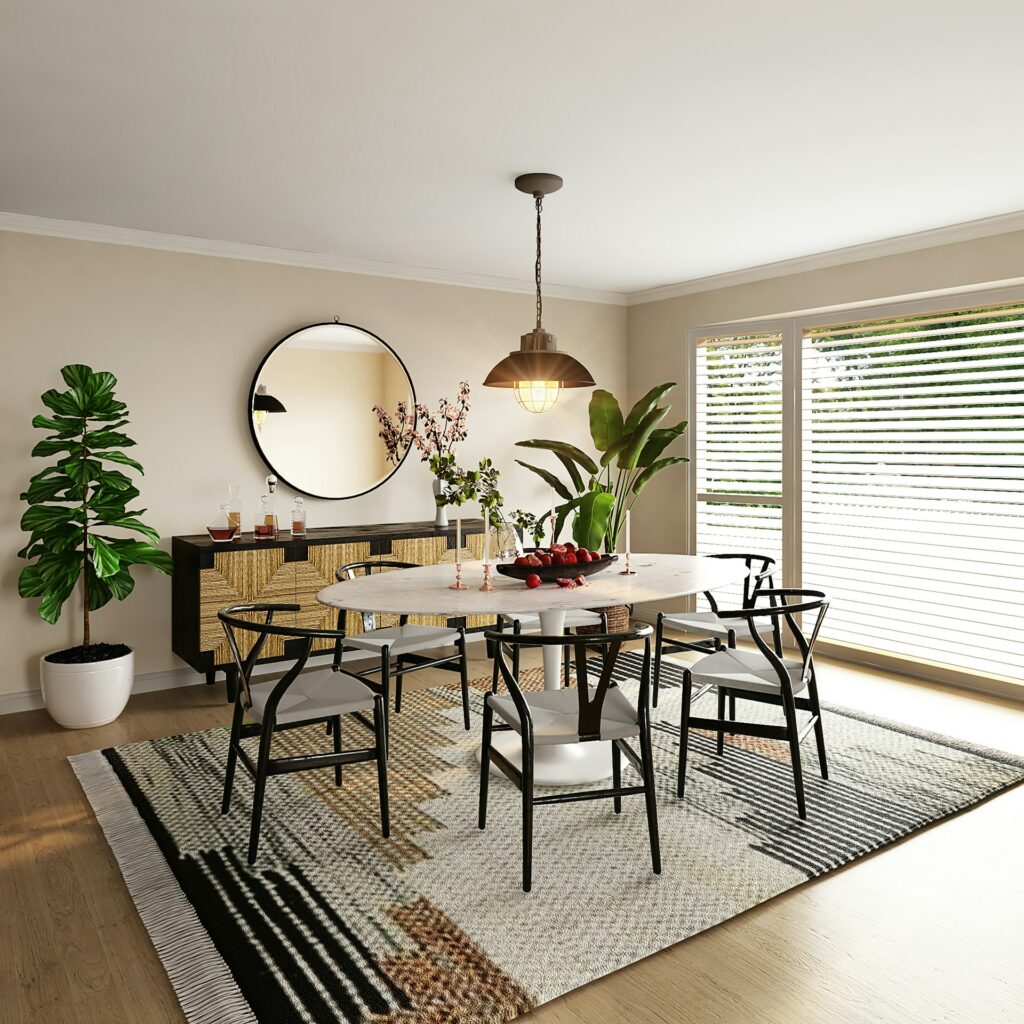
Visual Storytelling
Decorative elements like artwork, photos, and accessories can tell a visual story across your home. By carrying a theme or a style from room to room, you create a narrative that enhances the flow. This doesn’t mean every room should look the same, but there should be elements that echo throughout your home, providing a sense of familiarity and continuity.
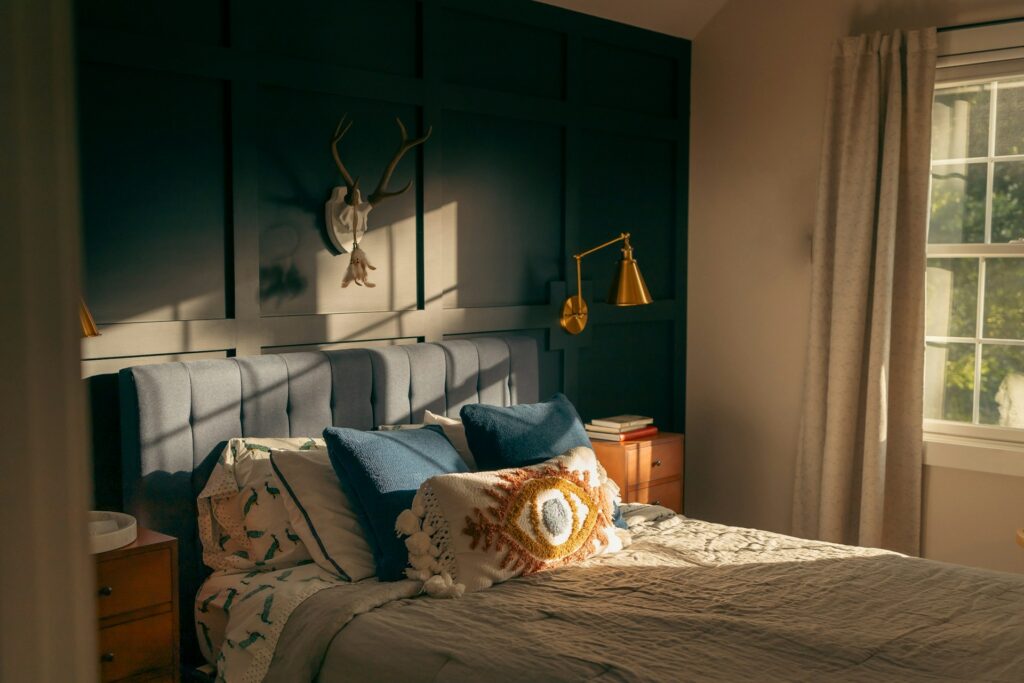
Lighting As A Guide
Lighting should be used strategically to enhance the flow. It can highlight pathways, define areas within open-plan spaces, and create a consistent ambience throughout the home. Consider a mix of ambient, task, and accent lighting, and use similar fixtures or shades to unify different spaces.
Practical Tips For Improving Flow In Interior Design
Creating a seamless flow in your home’s interior design is akin to choreographing a dance – every step, turn, and pause has to be considered to ensure a graceful performance. Here are some expanded practical tips to help you achieve this harmonious movement within your living spaces:
Declutter with Purpose
A clutter-free environment is essential for good flow. It’s not just about having fewer items; it’s about having the right items that serve a purpose and contribute positively to the overall design. Start by evaluating each room:
- Remove unnecessary items: If something doesn’t serve a function or bring you joy, it’s likely interrupting the flow.
- Organise with style: Use attractive storage solutions that complement your decor. Think woven baskets, stylish bookcases, and furniture with built-in storage.
- Maintain clear pathways: Ensure that walkways are at least 90 cm wide to allow for comfortable passage.
Use Mirrors to Reflect and Amplify
Mirrors are a designer’s secret weapon for creating a sense of expansiveness and flow:
- Strategic placement: Position mirrors to reflect natural light or beautiful views from the outdoors.
- Create continuity: Use mirrors to reflect key elements of your decor, such as a striking piece of art, to create a sense of rhythm and continuity between rooms.
- Illusion of space: In smaller rooms or narrow hallways, a large mirror can create the illusion of depth and improve flow.
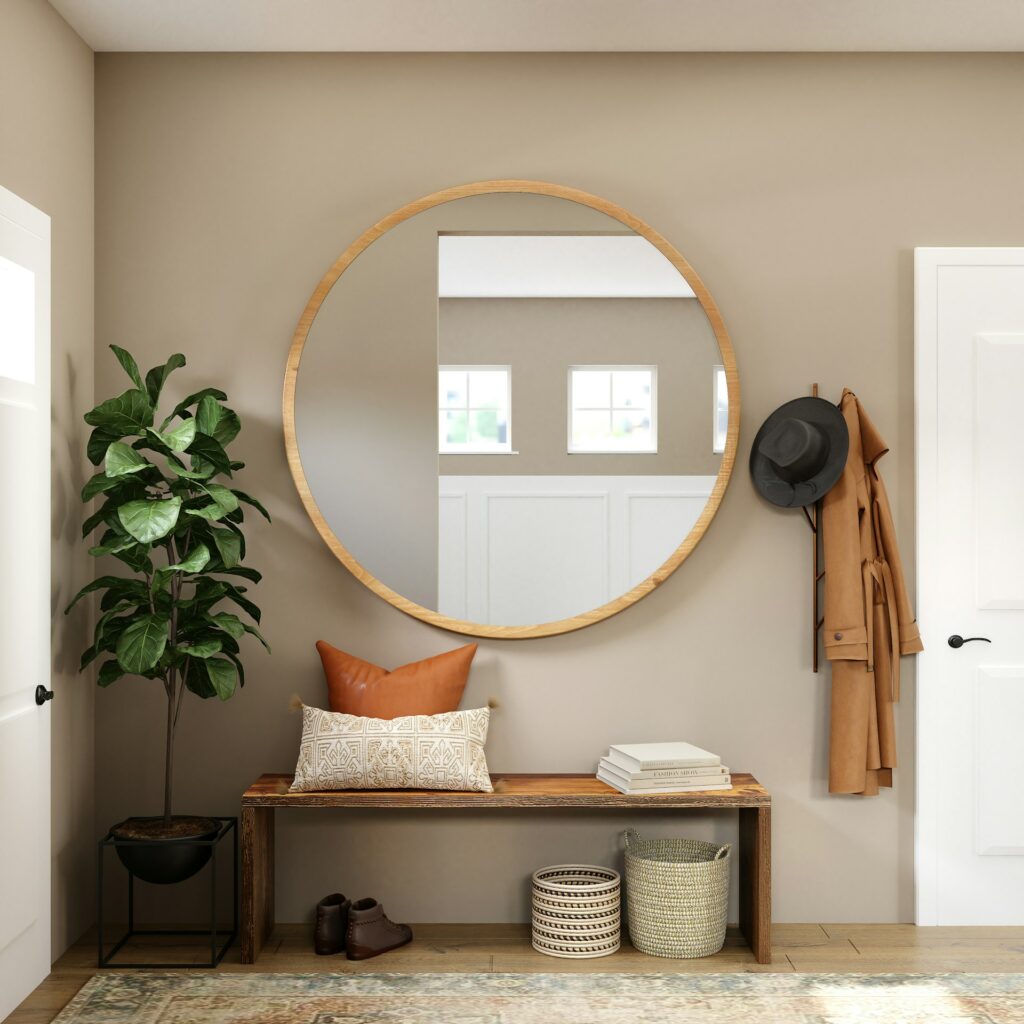
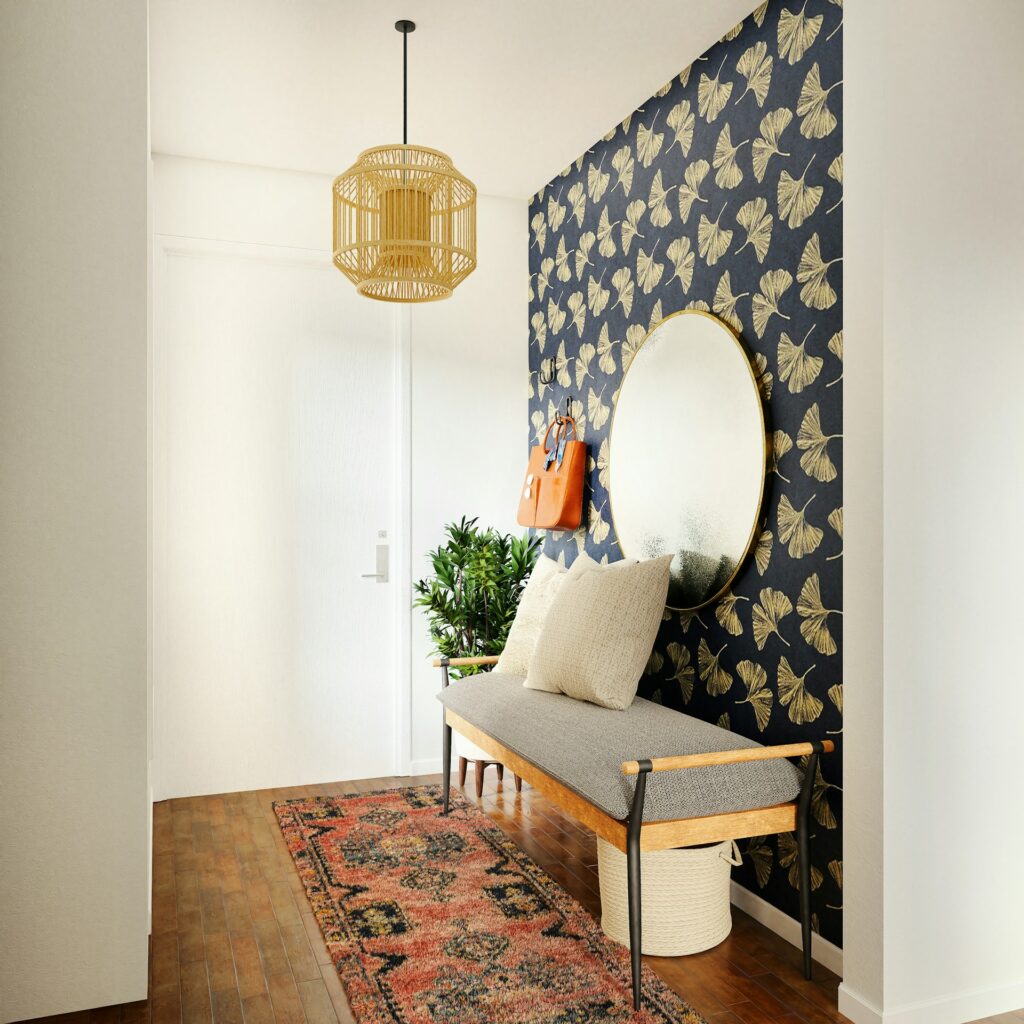
Consider Sightlines for Cohesion
Sightlines are the lines of vision from one space to another. They can be used to enhance flow by:
- Aligning features: Ensure that when you look from one room to another, the design elements align and create a cohesive visual journey.
- Open views: Avoid placing tall or bulky items where they will block views into adjacent spaces.
- Create focal points: Use artwork or statement furniture as focal points that draw the eye through to the next space.
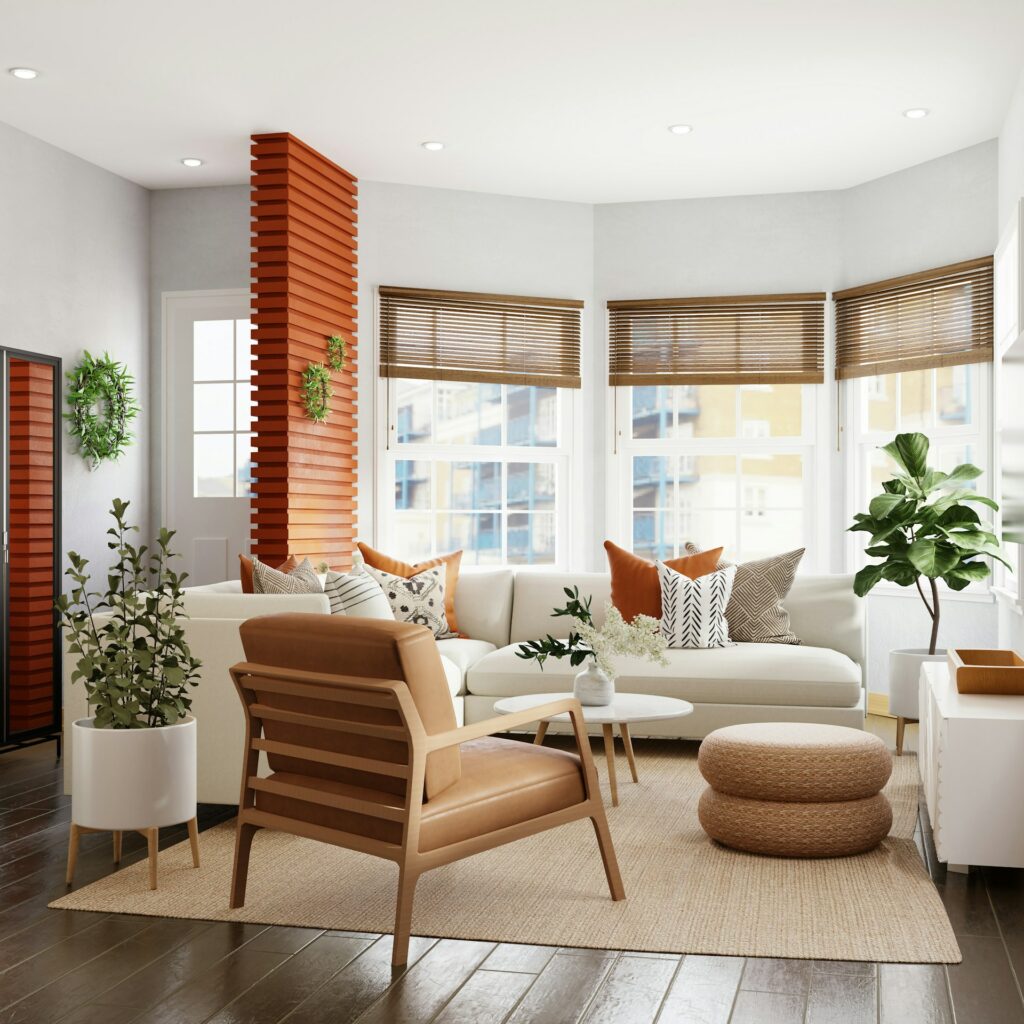
Repetition Creates Rhythm
Repetition can be a subtle yet powerful way to create a sense of flow:
- Echo materials: Repeat materials such as wood, metal, or glass in different rooms for a sense of unity.
- Consistent detailing: Use similar trim, moulding, or hardware throughout your home to tie spaces together.
- Pattern play: If you use patterns, consider repeating the same or similar patterns in various scales or colours across different rooms.
Balance for Harmony
A well-balanced room feels right and allows for a natural flow of movement and energy:
- Symmetry and asymmetry: Use symmetrical arrangements for a formal feel or asymmetrical groupings for a more casual atmosphere.
- Visual weight: Distribute furniture and decor evenly across the room to avoid a lopsided appearance.
- Negative space: Allow for empty space around furniture and decor to enable the eye and body to move freely.
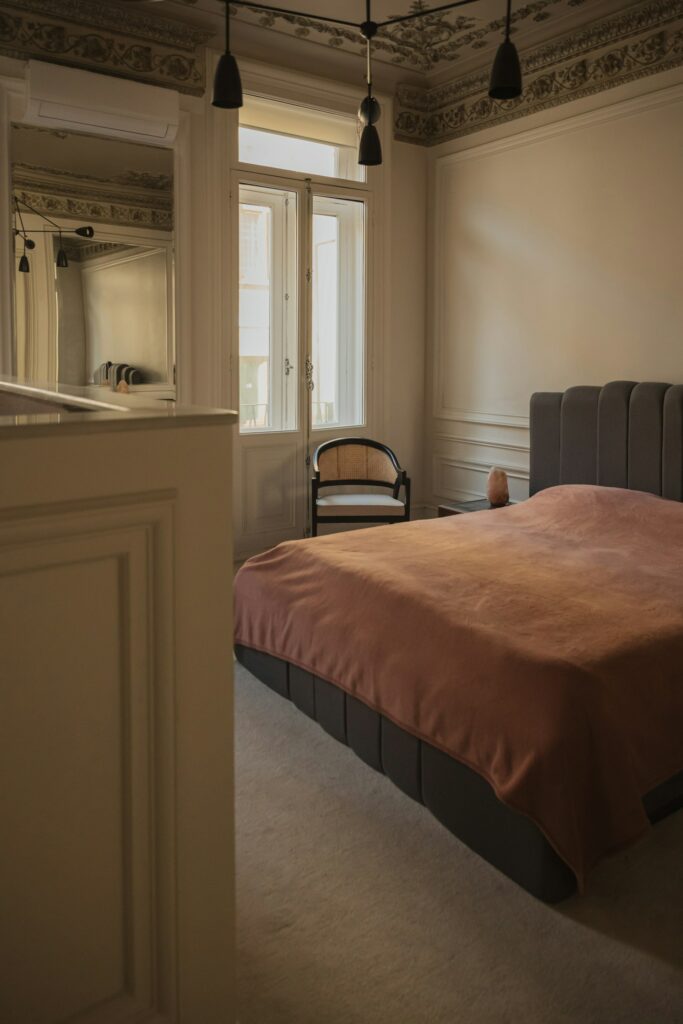
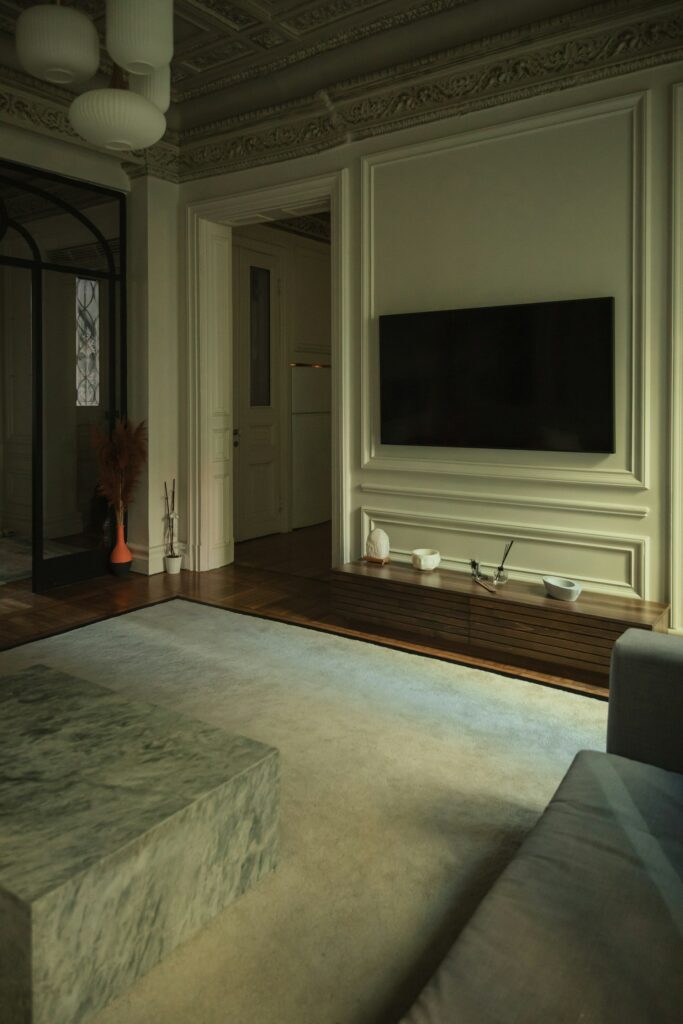
Transition with Thought
Transitional spaces like hallways and corridors are the arteries of your home’s flow:
- Consistent elements: Carry over key design elements from one room to the next to create a visual link.
- Lighting: Ensure these areas are well-lit to guide movement and create a welcoming transition.
- Artwork and decor: Use these spaces to display art or decor that complements adjacent rooms, leading the eye naturally from one space to another.
Colour Transitions
Colour can be a powerful tool to connect spaces:
- Palette progression: Use varying shades of the same colour or complementary colours to create a gradual transition from room to room.
- Accent colours: Introduce bold accent colours through accessories or artwork to create a thread of continuity.
- Neutral bases: Utilise neutral colours for walls and large furniture pieces, allowing for easy transitions with decorative accents.
Furniture as Flow Facilitators
Furniture should facilitate movement, not hinder it:
- Curved pieces: Consider sofas and chairs with rounded edges – an interior throwback that has stood the test of time, most certainly – to encourage a natural flow around them.
- Low-profile furniture: Lower furniture can make spaces feel more open and less obstructed.
- Versatile pieces: Use furniture that can serve multiple purposes or be easily moved to adapt to different occasions.
Incorporate Nature for Fluidity
Bringing elements of nature indoors can enhance flow:
- Indoor plants: Use plants to create a visual connection with the outdoors and to soften transitions between spaces.
- Natural materials: Incorporate wood, stone, or bamboo to add texture and a sense of continuity with the natural world.
- Flowing water: Consider a small indoor fountain or water feature to introduce the soothing sound of flowing water, which can subtly guide movement through your home.
Personalise Your Pathways
Finally, ensure that your home reflects your personal journey:
- Display personal items: Use family photos, heirlooms, or travel souvenirs to create a personal narrative that flows throughout your home.
- Custom pathways: Tailor the flow to your lifestyle, whether it’s creating an open play area for children or a clear path to your home office.
- Engage the senses: Incorporate textures, scents, and sounds that resonate with you and create a seamless sensory experience from room to room.
By implementing these detailed tips, you can significantly improve the flow in your interior design, creating a home that not only looks cohesive and well-thought-out but also feels intuitively aligned with your lifestyle and movement.
The Bottom Line
Creating a sense of flow in your interior design is about more than aesthetics; it’s about crafting an environment that feels intuitively right and meets the needs of those who inhabit it. By considering colour, flooring, furniture layout, lighting, and decorative elements, you can create a home that not only looks harmonious but also enhances the quality of your daily life.
Remember, the ultimate goal is to design a space that feels like a natural extension of yourself – a place where you can move freely and with ease.





